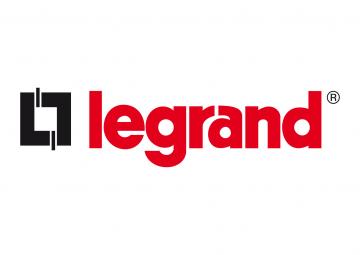At VERGE SF, Legrand announced it is sharing key energy savings resources that have been developed as part of a successful effort to significantly reduce energy intensity across its North American facilities. These resources can be used by manufacturing companies and other organizations to develop and implement energy and cost savings programs for their businesses.
The first energy savings resource, a 16-page Energy Management Handbook, is a straightforward tool to help companies take a practical and logical approach to launching an energy management program. The handbook draws on key learnings from Legrand’s efforts to reduce energy consumption. It outlines a four-step process: Making a Commitment, Assessing Your Current State of Energy Use, Creating an Action Plan, and Reporting and Evaluating Progress. The handbook is available for download at www.legrand.us/sustainability.
The second resource is a new Energy Project Evaluation Tool, an interactive spreadsheet that shows companies where to start on their energy savings journey. To explain the Energy Project Evaluation Tool, Legrand will offer Web-based learning modules.
Both energy savings resources are offered at no cost as part of Legrand’s ongoing commitment to share resources it is developing as it reduces energy intensity across its North American facilities.
“Legrand is working to make dramatic improvements in energy management across our North American sites – from office buildings to warehouses to factories," said Susan Rochford,Vice President of Energy Efficiency, Sustainability & Public Policy for Legrand North America. "At VERGE SF, I am sharing the story of our public commitment – as part of the Department of Energy’s Better Buildings, Better Plants Challenge – where in two short years, we achieved a 20.2 percent energy intensity reduction across our facilities.”
Added Legrand North America President and CEO John Selldorff, “The success we’ve witnessed in the last two years has stemmed not only from the implementation of energy projects, but from a holistic framework that includes initiatives aimed at engaging employees in energy savings, establishing visible energy goals and accountability to meet them, and launching a common company-wide approach to tracking, reporting, and analyzing energy use – this is our focus on people, processes, and technology. We’re committed to sharing our energy savings resources with other companies who may be starting or are in the middle of their sustainability journey.”
According to Joel Makower, Executive Editor of GreenBizGroup and host of the VERGE SF conference, “Legrand is taking a major step in freely sharing the resources it has developed, including its own best practices, with other organizations. This showcases the power of working together - across companies and sectors – to optimize everyone’s energy use. We’re excited to hear their success story and support them in sharing their tools with other companies around the world.”
Related Stories
| May 10, 2011
Solar installations on multifamily rooftops aid social change
The Los Angeles Business Council's study on the feasibility of installing solar panels on the city’s multifamily buildings shows there's tremendous rooftop capacity, and that a significant portion of that rooftop capacity comes from buildings in economically depressed neighborhoods. Solar installations could therefore be used to create jobs, lower utility costs, and improve conditions for residents in these neighborhood.
| May 3, 2011
North Carolina State University partners with Schneider Electric, targets energy efficiency
Schneider Electric is partnering with North Carolina State University on energy efficiency projects for 1.6 million square feet of building space across 13 campus facilities. As part of the $20 million project, the university will implement 89 separate energy conservation measures that will save the school approximately 10,137,668 kilowatt hours of electricity and 68,785 decatherms of natural gas annually.
| Apr 19, 2011
America’s energy use, in one handy chart
The Grist takes a look at Lawrence Livermore National Laboratory's famed energy flow charts and tells us what we’re wasting and what we’re doing well. Turns out, commercial buildings account for the smallest amounts of energy use.
| Apr 11, 2011
Wind turbines to generate power for new UNT football stadium
The University of North Texas has received a $2 million grant from the State Energy Conservation Office to install three wind turbines that will feed the electrical grid and provide power to UNT’s new football stadium.
| Mar 17, 2011
Carbon footprint of public sector buildings in England and Wales to be released
The energy usage of 40,146 public buildings—including schools, hospitals, and offices—in England and Wales is being released to the public.
| Mar 8, 2011
Building, energy performance rating site launched
The Institute for Market Transformation and the Natural Resources Defense Council announced the launch of BuildingRating.org, the world’s first comprehensive resource on energy performance rating and disclosure policies for commercial buildings and homes.
| Mar 2, 2011
New ASHRAE standard may be too broad for the Canadian market
New Standard 189.1 from the American Society of Heating, Refrigeration, and Air-conditioning Engineers (ASHRAE), which goes beyond energy efficiency to include provisions that affect construction, post-occupancy monitoring, and site control, may be too much for the Canadian market—at least for now.
| Mar 1, 2011
Honeywell to implement China’s first smart grid project for managing energy use in commercial buildings
Honeywell announced it was selected to develop and implement China’s first smart grid pilot project and feasibility study for managing energy use in commercial buildings, also known as demand-side management. The project is part of a grant agreement signed today between the U.S. Trade and Development Agency (USTDA) and State Grid Electric Power Research Institute (SGEPRI), sponsor of the project and a subsidiary of State Grid Corp. of China.







